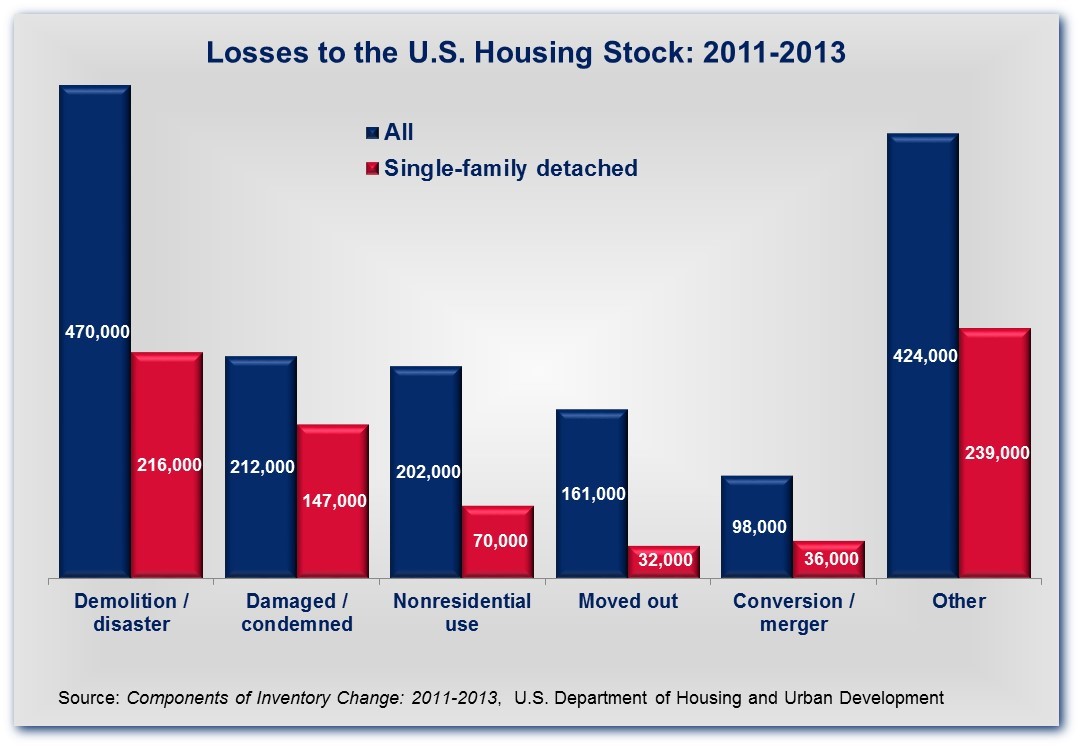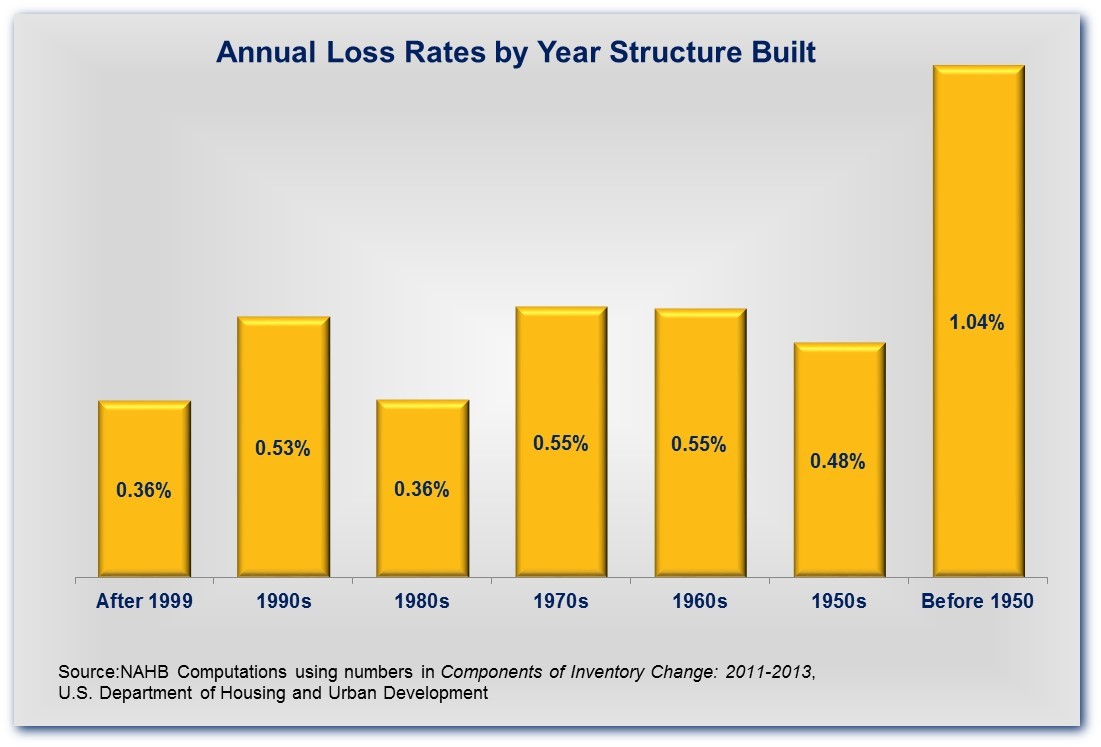There is an old saying that they don't build things like they used to, but it seems that houses at least are still built to last. The National Association of Home Builders (NAHB) says that almost 99 percent of homes that were in the U.S. housing stock in 2011 were still there in 2013. For those structures that that were no longer available for housing, there were a variety of reasons they disappeared.
NAHB's Paul Emrath bases his Eye on Housing blog entry on a Housing and Urban Development analysis of the Census Bureau's 2011 American Housing Survey (AHS). That survey counted 132.42 million existing homes. The next AHS in 2013, revisited the same housing units and found 1,567,000 units had been lost. While the reasons this happened could not be determined and/or categorized for about a quarter of them (424,000), the reasons that could be identified were interesting. The largest cause for loss was demolitions and disasters, affecting 470,000 units. Damage or condemnation affected another 212,000. There were 202,000 residential units that were converted to non-residential use and 161,000 units that were moved. Most of that last group were manufactured houses or mobile homes. Another 98,000 units disappeared into conversions or mergers, two smaller units combined into a larger one.

Those numbers include all housing units. There were far fewer single-family units that disappeared and overall less than half of the lost units (740,000) were single family. This is especially striking as single family housing accounted for 82.97 million, or about 62 percent, of the 132.42 million housing units that existed in 2011.
NAHB says these statistics imply that 0.59 percent of the housing stock is lost in a given year but this varies both by the type and the age of the housing. Single family homes, as noted above, have a lower rate of loss, 0.45 percent. They are not prone to experience either moves or mergers while mobile homes, have a higher rate of loss as they are likely to be moved from their original locations.

Homes built prior to 1950 have an annual loss rate of 1.04 percent while those built after 1999 have a rate of .36 percent. NAHB says if these rates of loss remain consistent it would appear that half of the existing homes built before the midpoint of the 20th Century will still be around as this century ends and half of the homes build in recent years will live to celebrate their 100th anniversary.







